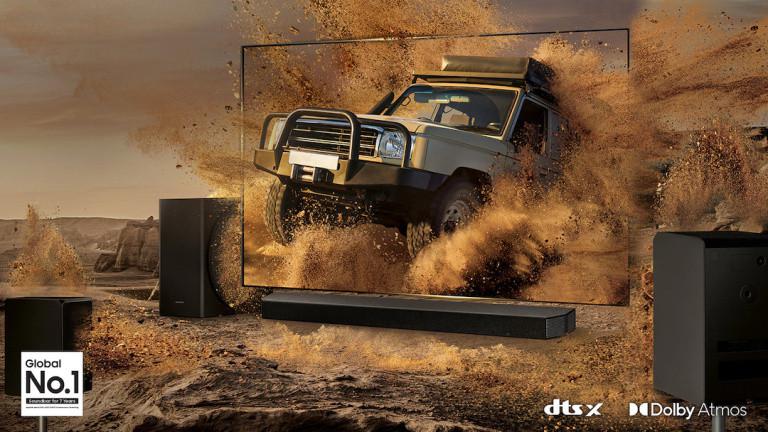Soundbar: Understanding sound spatialization
When it comes to sound, most people understand the difference between lows, mids (where voices hit) and lows. treble. The adjectives "ample", "warm" or "metallic" are transparent enough to be picked up by the general public. On the other hand, when it comes to figures, it is immediately less telling.
Too bad, the technology we talk about today is based on numbers. Do you know what a 2.1, 3.1, 5.1 or even 7.1 sound system is?
You saw it in the title, we're going to talk about the spatialization of sound. The first number you see is the number of channels (understand the number of speakers) through which the sound comes out.
The “.1” simply means that there is an optional additional channel dedicated to low frequencies, below 120 Hz. This is called a subwoofer. At home, the subwoofer is often a subwoofer placed next to the TV cabinet.
These numbers are not there to look pretty. The audio file of your Netflix series is sometimes mixed in stereo (so 2.0 or 2.1). There, one speaker on each side of the screen is enough. At best, the TV's AI will translate 2.0 into more spatialized sound adapted to your personal system.

But nowadays, simple stereo is less and less hegemonic. Many films and series are mixed in 5.1 or even 7.1 (almost all VOD platforms offer Dolby Atmos content). If you are well equipped, immersion has absolutely nothing to do with it.
In a war movie, you'll feel like you're in the middle of the battlefield, with explosions coming from all sides. During a chase, you will feel the cars spinning from left to right but also from front to back. In short, you get the picture.
With a 5.1 source, if you don't have enough channels in your sound system, the overall quality of the content you watch will be limited.
It was to break this bridle that Q-Symphony was invented.
Q-Symphony: The specificity of Samsung TVs
Usually, when you plug in a soundbar, the TV speakers turn off. Logic, it is absurd to pay for better sound quality so that it ends up diluted. What if, instead of being diluted, the sound could be sublimated? This is the bet that Samsung took with Q-Symphony.
The idea is simple and effective: increase the spatialization of sound by using the TV speakers as additional channels. If your audio file supports the 3.1, 5.1 or 7.1 format, it needs the maximum number of channels to best express its complexity. By communicating Samsung soundbars with 4K QLED TVs, the file therefore has access to new channels.
Combine that with a nice job of the TV's artificial intelligence to adapt to your environment, and you'll have a fairly impressive spatial rendering, even without speakers placed behind you (the principle is to use the reverberation of the sound on the walls and ceiling to simulate the rear channels).
Of course, not all Korean brand TVs are compatible with this technology. To successfully mix the sound of a bar and a TV, the two machines must have a relatively similar quality. As a result, only the best Samsung 4K TV models are Q-Symphony compatible. Note, however, that the number of compatible TVs has changed over the years.
If you buy very high-end Neo QLED and a good Samsung soundbar, Q-Symphony allows you to approach a cinematic rendering... from a sofa.
Commercially, it's clever. In addition to making a real difference with the competition thanks to a fairly innovative feature, Samsung, the world leader in the television market, will retain its customers who have every interest in buying a soundbar from the brand to take advantage of Q-Symphony. .








